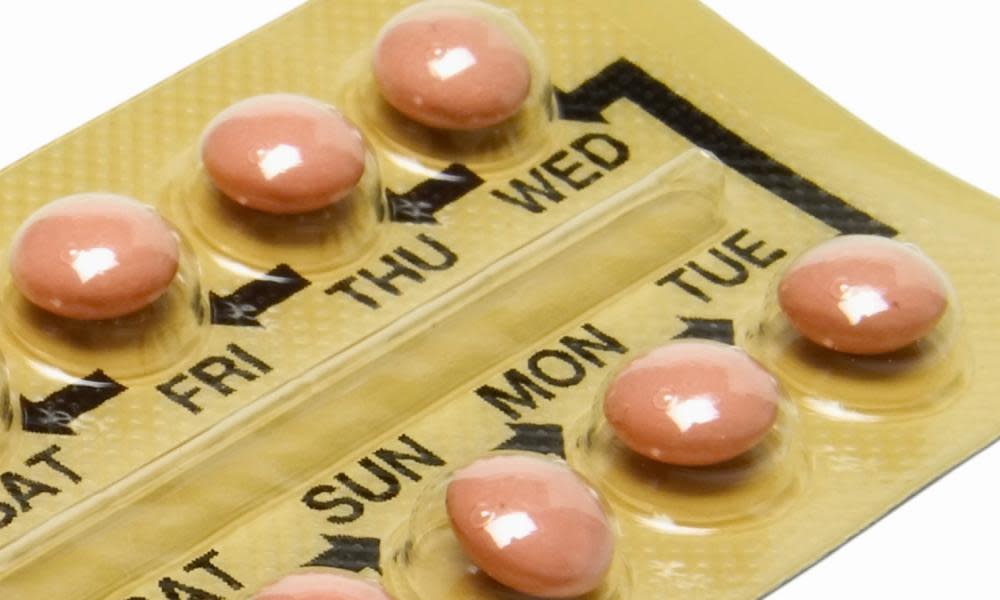Medical advice on the pill was wrong for 60 years. How convenient to blame the pope

Earlier this month, updated guidelines from the Faculty of Sexual & Reproductive Healthcare (FSRH) indicated that the seven-day break commonly recommended in most contraceptive pill regimens has no health benefits. Under the new guidelines, people taking the pill are free to reduce or stop this pause, allowing them to skip their monthly bleeds.
Understandably, these changes were widely reported by the media, with most reports suggesting an unusual explanation for the original recommendation of the hormone-free break. Speaking to the Telegraph, Professor John Guillebaud, of University College London, said: “The gynaecologist John Rock devised [the break] because he hoped that the pope would accept the pill and make it acceptable for Catholics to use. Rock thought if it did imitate the natural cycle then the pope would accept it.”
This papal explanation is a surprising element to the story: the Catholic church in particular has objections to contraception, but could it really be the case that a doctor would add a superfluous and potentially harmful break in a contraceptive procedure purely to please the pope?
According to the FSRH, the seven-day break can be associated with headaches, mood change, a “heavy, painful or simply unwanted” withdrawal bleed each month, and an increased risk of ovulation – causing some women taking the pill to nevertheless fall pregnant. It seems strange, then, that a medical establishment would impose this break on those taking the pill, given that there is no health benefit.
To understand where the seven-day break really came from, we need to know a bit about how this society-changing drug works: the combined hormones in the pill prevent ovulation by tricking the body into thinking it is pregnant. Perhaps unexpectedly, early trials of combined hormonal contraception started out among patients trying to conceive. A gynaecologist with a hunch suspected that patients with unexplained infertility might fall pregnant more easily once the body had experienced pregnancy. Therefore patients with infertility were given a combination of hormones for a few months. After they stopped taking the hormones a number later became pregnant.
However, there was a problem – the early forms of the pill had significantly higher doses than today’s versions. This meant that women in this trial had early pregnancy symptoms, including morning sickness. This gave many distressing false hope. First they believed they were pregnant when taking hormones, and then discovered they weren’t when they stopped. So it was suggested that allowing the women on these early pills to take a monthly break could assure them they were not pregnant. Thus, the seven-day break was born – not, as Professor Guillebaud claims, because of any need to persuade the pope.
As it happens, the co-creators of the pill did try to convince the Catholic church to permit this new contraceptive, but they based their arguments on an appeal to nature. They reasoned that the pill makes use of hormones that the body itself produces – the ingredients and the way they prevent pregnancy is arguably as natural as the rhythm method, which the Catholic church already allowed.
We might be tempted to ask whether it matters if the hormone-free break was to appease the pontiff or to reassure early adopters of the pill. But by blaming the pope for 60 years of suboptimal contraception use, as Guillebaud suggested, we fail to ask the more important question: why did the seven-day break become such a mainstay of reproductive health for 60 years?
The answer, I believe, is far more complicated than the intervention of Catholic doctrine, and requires some real work to fix. Two-thirds of women aged 20-24 take the combined contraceptive pill – that’s a huge proportion of a large part of our population. And yet for 60 years, few in the medical establishment questioned whether the seven-day break was necessary. No one wondered whether women really had to go through the pain, discomfort or even inconvenience of a monthly bleed.
Studies have shown repeatedly that our medical system has an inherent bias against women. Women presenting with pain are more frequently given sedatives than painkillers, where men are given painkillers. Women with coronary heart disease have delayed treatment compared with men. And people even rate the perceived pain of a paediatric patient differently, depending on whether they are told the patient is male or female.
We now have another clear example to add to the pile: women are exposed to unnecessary, inconvenient, uncomfortable and potentially damaging monthly bleeds for no reason other than that nobody thought to question whether those bleeds were necessary.
Unconscious medical bias is a real phenomenon that we can, and must work to fix. Blaming the pope merely allows us to hide from the truth.
• Dr Alice Howarth is a clinical and molecular pharmacologist and cell biologist at the University of Liverpool

 Yahoo News
Yahoo News 
